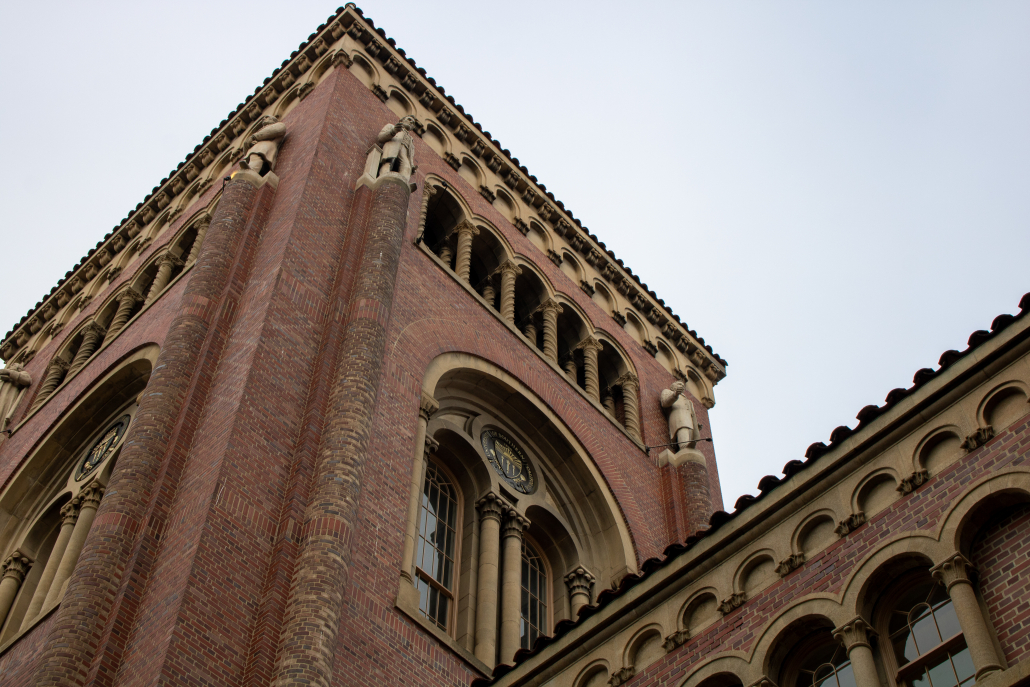Lucy Dacus’ latest album “Home Video” could not have come at a better time. As we all return home for the summer and enter a humid Cancer season, Dacus gives us music that lets us reflect on our emotional stability.
Per its title, the album evokes a familiar nostalgia within Dacus’ fans as they embark on a fragmentary tour of her childhood. The singer-songwriter shares her autobiography through the lens of a girl raised on Christian values in the suburbs of Richmond, Virginia. Dacus’ album explores all the introspections that come with growing up, relating to unrequited love, familial tension and the confines of religion. In all, “Home Video” plays like a warm embrace for anyone attempting to make sense of themselves through the fleeting memories of suburbia this summer.
Awarded a Libera nomination for “Best Breakthrough Artist” in 2019, Dacus has been on the rise as a promising indie rock artist. Like her previous critically acclaimed albums ”Historian” and “No Burden,” “Home Video” again employs poignant and intimate storytelling, narrated through her silky alto voice that fans have grown to find comfort in. Dacus’ boygenius groupmates Julien Baker and Phoebe Bridgers also provide backing vocals on the album, offering familiar voices for fans. Often using second-person narration over airy acoustics, Dacus allows the listener to experience her memoir in an extremely vicarious way.
The album starts strong with the upbeat guitar track on “Hot & Heavy,” which throws us right into a sensory summer night in Dacus’ small hometown. The song addresses a person, or perhaps a memory, with “you,” imparting personal slices of her childhood from the get-go. Though the instrumentals are lively, the lyrics still maintain an air of melancholy and contemplation, capturing the sticky sensation of nostalgia.
The album also shines a retrospective light on Dacus’ core memories. Religion is a prevalent theme; against a groovy, slow-paced instrumental track, her song “VBS” — an abbreviation for “Vacation Bible School” — tells listeners about her formative time there. This track recounts the story of her first boyfriend and contains some of my favorite lyrics on the album. Lines like “Hands above our heads, reaching for God/ Back in the cabin, snorting nutmeg in your bunk bed” and “There’s nothing you can do but the only thing you found/ Playing Slayer at full volume helps to block it out” profoundly capture the irony of Dacus’ memory of using drugs and blasting satanic metal at Bible camp.

Singer-songwriter Lucy Dacus’ latest album “Home Video” released June 25. (Pitch Perfect PR/Ebru Yildiz)
Since she first performed the song in 2018, “Thumbs” is Dacus’ most anticipated and heart-wrenching number. Dacus tells the story of her dear friend meeting an absent father against a haunting, delicate synth track. Dacus’ lyricism is woefully raw, with the chorus repeating, “I would kill him/ Quick and easy/ Your nails are digging/ Into my knee.” The pain behind her voice is palpable enough to evoke a nauseating response while listening — the mark of a stellar sad girl anthem.
“Brando” quickly made its way into my daily rotation. On top of a bouncy instrumental, Dacus pokes fun at a common archetype: that person who makes an extra effort to try to be deep in an attempt to be romantic, but instead just seems pretentious and laughably idealistic. This track is playful, and the relatable lyrics appeal to anybody who has fallen victim to this type of character.
“First Time” presents listeners with a beautiful coming-of-age track. Atop a guitar and drum combo reminiscent of songs I listened to in high school, the track plays as an upbeat yet fleeting diary entry. The recurring electric guitar strums in the chorus, coupled with Dacus’ whispery yet passionate voice, ignites a longing for a relationship I never even knew I had. I advise blasting this track at max volume as you speed past streetlights in your small town, yelling “take me, take me, take me!” to your past life in suburbia — it has done wonders for me.
As a big proponent of Dacus’ soft-girl, stripped-down song style, I thought the only shortcoming of “Home Video” was the autotuned track, “Partner in Crime”: the vocals are heavily processed, which depersonalizes the song and mars the album’s otherwise intimate atmosphere.
Overall, Dacus’ “Home Video” is exactly what was missing in this liminal time. Upon every re-listen, her music is able to evoke feelings native to those who have grown up in a quiet town, where each memory holds more retrospective significance with every passing year. Whether it helps you process your past or romanticize your suburban life, “Home Video” is undoubtedly one of the most rewarding albums of the summer.
The post Lucy Dacus’ ‘Home Video’ gifts us the perfect music to indulge in our summertime sadness appeared first on The Emory Wheel.




